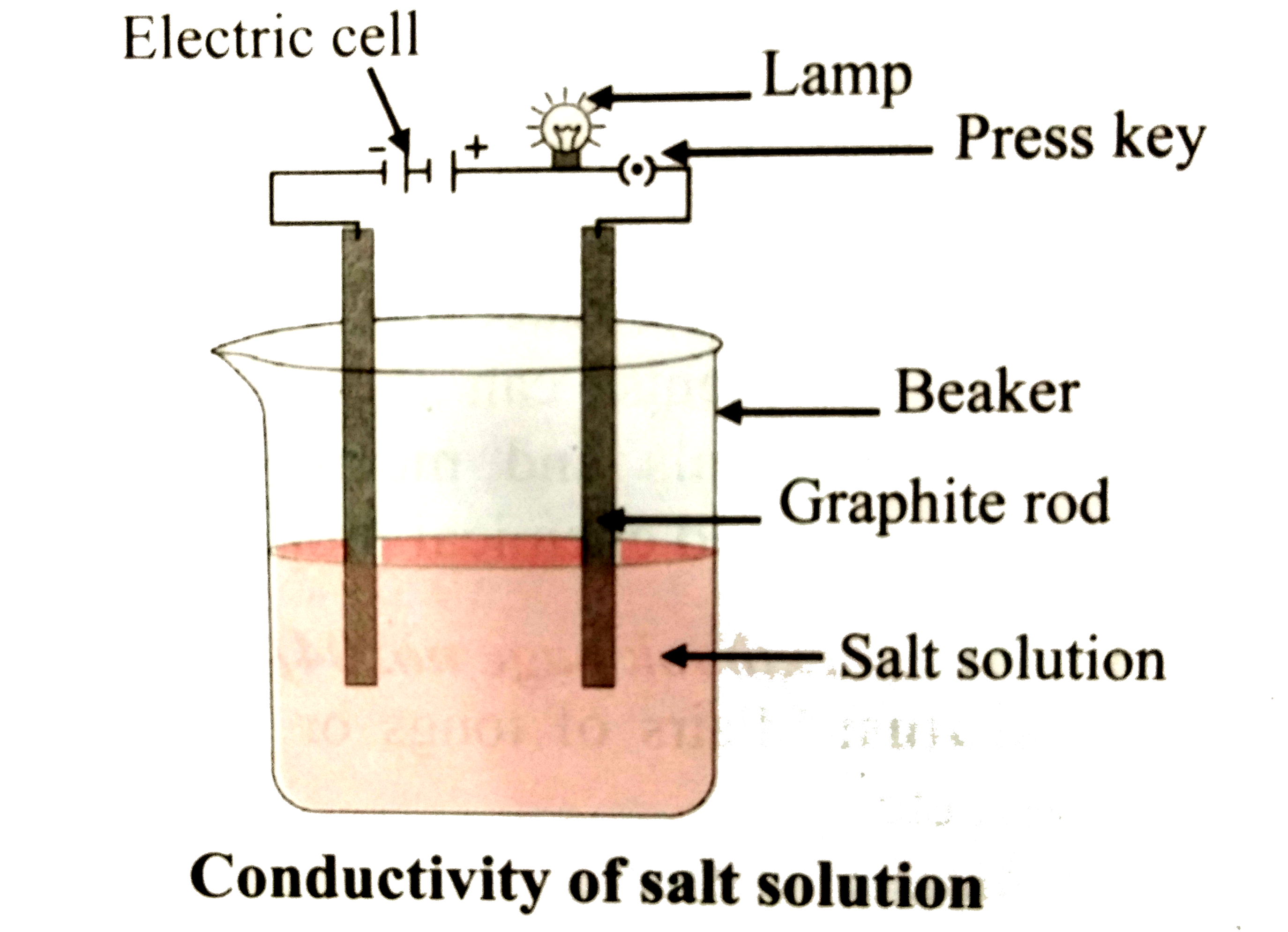Apparatus: Metal spatula, burner, carbon electrodes, beaker, cell, lamp, press key, electrical wires, etc.
Chemicals: Samples of sodium chloride, potassium iodide and barium chloride, water.
Procedure: Observe the above samples. Place sample of one of the above salts on the spatula and heat it on the flame of the burner. Repeat
the procedure using the other salts. As shown in the figure, assemble an electrolytic cell.

Assemble an electrolytic cell by using a beaker and connecting the carbon electrodes to the positive and negative terminal of the cell. Dip the electrodes in solution of any one of the salts. Do you see the lamp glowing? Check this with all the other salts as well.
Samples of sodium chloride, potassium iodide and barium chloride do not readily melt on heating as they have high melting points. They give ions in their solutions. Due to these ions, their solutions become conductive. Hence, the lamp glows when electrodes are dipped in solutions of these salts
Topper's Solved these Questions
- METALLURGYBOOK - TARGET PUBLICATIONCHAPTER - METALLURGYEXERCISE - CHAPTER ASSESSMENT
19 Videos
- METALLURGYBOOK - TARGET PUBLICATIONCHAPTER - METALLURGYEXERCISE - QUESTION BASED ON PARAGRAPH
5 Videos
- CHEMICAL REACTIONS AND EQUATIONSBOOK - TARGET PUBLICATIONCHAPTER - CHEMICAL REACTIONS AND EQUATIONSEXERCISE - Give balanced chemical equation
26 Videos
- PERIODIC CLASSIFICATION OF ELEMENTS BOOK - TARGET PUBLICATIONCHAPTER - PERIODIC CLASSIFICATION OF ELEMENTS EXERCISE - Chapter Assessment
9 Videos
Similar Questions
A mixture of sodium chloride (salt) and ammonium chloride can be separated by
View SolutionApparatus: Pairs of tongs or spatula, knife, burner, etc.
Chemicals: Samples of aluminium, copper, iron, lead, magnesium, zinc and sodium.
Procedure: Hold the sample of each of the above metals at the top of the flame of a burner with the help of a pair of tongs, or a spatula

How does the surface of a metal appear on catching fire?
View SolutionName three chemicals made from common salt (or sodium chloride).
View SolutionApparatus: Pairs of tongs or spatula, knife, burner, etc.
Chemicals: Samples of aluminium, copper, iron, lead, magnesium, zinc and sodium.
Procedure: Hold the sample of each of the above metals at the top of the flame of a burner with the help of a pair of tongs, or a spatula

What is the colour of the flame while the metal is burning on the flame?
View SolutionApparatus: Pairs of tongs or spatula, knife, burner, etc.
Chemicals: Samples of aluminium, copper, iron, lead, magnesium, zinc and sodium.
Procedure: Hold the sample of each of the above metals at the top of the flame of a burner with the help of a pair of tongs, or a spatula

Which metal catches fire readily?
View SolutionSelect the correct observation when salt samples such as NaCl,KI,BaCl2 is taken on a metal spatula and heated directly on the flame as shown in the figure below:

View SolutionPut the beaker on a stand and heat the ice using a burner, as shown in the figure on page 62 of your textbook.
View SolutionPut the beaker on a stand and heat the ice using a burner, as shown in the figure on page 62 of your textbook.
View SolutionThe colour shown by potassium metal in the oxidizing flame of Bunsen burner is
View SolutionThe chemical used in seed clouding is
(Potassium iodide, Sodium iodide, Potassium chloride, Photosynthetic cycle)
View Solution
